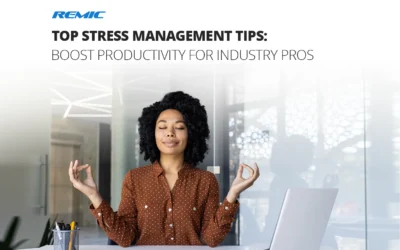How to Win a Face-2-Face Client Meeting
There are three basic places where a mortgage agent can meet a client:
- The client’s home
- The mortgage agent’s office
- Another outside location.
There are several positives and negatives for each location, but it is important to focus on providing good customer service for the client, so wherever is best for the client is often the right choice. Wherever the meeting takes place it is vital that trust be created with the client as soon as possible. The different locations simply necessitate different processes to create this trust.

First Impressions
It is important to begin every meeting, regardless of where it occurs, with a positive attitude and professional demeanor. To make a good first impression it is important to dress like a professional, be on time, and be well prepared. Once in the meeting ask open-ended questions, listen well, and take notes. Taking notes from the beginning of the meeting before the actual interview begins is an important way of telling the client that the mortgage agent believes that what the client has to say is important, and it is.
The Client’s Home
When visiting a client in his or her home, it is important to prepare to arrive early. This limits the possibility of getting lost in unfamiliar terrain and provides the mortgage agent an opportunity to review the client’s file before entering his or her home. A best practice is to arrive at least ten minutes ahead of schedule and park down the road. This time should be taken to reacquaint oneself with the client’s information, including his or her name and the purpose of the financing.
When approaching the home focus on the task at hand. This means that the mortgage agent should clear his or her mind and leave all of his or her troubles, concerns, plans and any other distraction outside of the home.
Once the client answers the door, the mortgage agent should introduce him or herself. Provide the homeowner with a business card, preferably a card with a photo on it to put the homeowner at ease about the agent’s identity. Don’t forget to shake hands. While this may seem obvious, it may not be to someone who has not been in sales before. The next step is controlling the environment. The agent must suggest that the meeting occur in the kitchen or a sitting room. Any place that does not have a television or other distraction is acceptable.
Mortgage brokering in Ontario is regulated by the Financial Services Commission of Ontario (FSCO) and requires a license. To obtain a license you must first pass an accredited course. The Real Estate and Mortgage Institute of Canada Inc. (REMIC) is accredited by FSCO to provide the course. For more information please visit us at www.remic.ca/getlicensed or call us at 877-447-3642
When sitting, the mortgage agent must ensure that the client is seated across the table and not to the left or right of him or her. If the meeting includes a spouse it is important to have them both sitting across from the agent. This is important because if the agent ends up between the couple, he or she will not be able to gauge both of their reactions simultaneously. By being able to watch the clients’ movements and body language, the agent will be able to better determine who the decision-maker is.
It is not rude to ask a client to turn off a television or radio, or limit the amount of distraction that may be occurring around the room, such as by putting a dog in another room. If the mortgage agent tells the client that his or her full attention is required to ensure that the right product and best rate is attained, the client should agree to the request.
Before beginning the interview it is important to create trust. This is much more difficult and time consuming to do in a client’s home as opposed to the agent’s office since the office environment in itself depicts professionalism. In the home environment the agent must prove professionalism and technical proficiency. This should be done at the outset. The client will already unconsciously begin to look at the agent as a professional if the agent dresses professionally; however this is not enough to create trust quickly.
To accomplish this task requires preparation. A few minutes should be spent discussing the agent’s background and experience. If the agent is new, then the focus should be on the brokerage’s background. This will reassure the client that he or she is dealing with a professional. Once this has been accomplished it is time to move on to taking the application.
The Mortgage Agent’s Office
Meeting in the agent’s office requires the same attention to detail as meeting in a client’s home; however it is easier to set the tone of the meeting beforehand. Given the prominent display of any awards, professional accomplishments, diplomas, etc., the client will begin to unconsciously develop a level of trust as soon as he or she enters the meeting room. To illustrate this point consider a doctor. In each examination room there tends to be a diploma on the wall. This is designed to reassure the patient that the doctor is indeed a practicing professional. The same result occurs when a client sees the evidence of accomplishments in the agent’s office. Yet another example is the prominent displaying of awards by Real Estate Salespersons. They understand that quickly creating trust is key to a strong relationship.
Limiting distractions by turning off cell phones and closing the office door is also required, as well as ensuring that the client or clients are seated across from the mortgage agent.
Another Outside Location
A mortgage agent once said that he had over two hundred offices in Ontario. He was referring to Tim Horton’s locations. Meeting a client at another outside location, although perhaps more convenient for the client, limits the control that the agent has over the environment. This means that distractions may be unavoidable. To limit the distractions, the agent should arrive early and choose an area within the location that has the least amount of traffic.
The same process that occurs in a client’s home must then be followed. Ensure that the client or clients are seated across from the agent and that the introduction includes sufficient information on the agent’s credentials to elicit a feeling of trust from the client.
Looking to get more referrals? Read our article: 8 Dynamite Ways to Get More Mortgage Referral Sources
You may also be interested in our article about managing your client database: Close More Deals By Leveraging Your Client Database
If you found this article helpful, please share it with your community!



